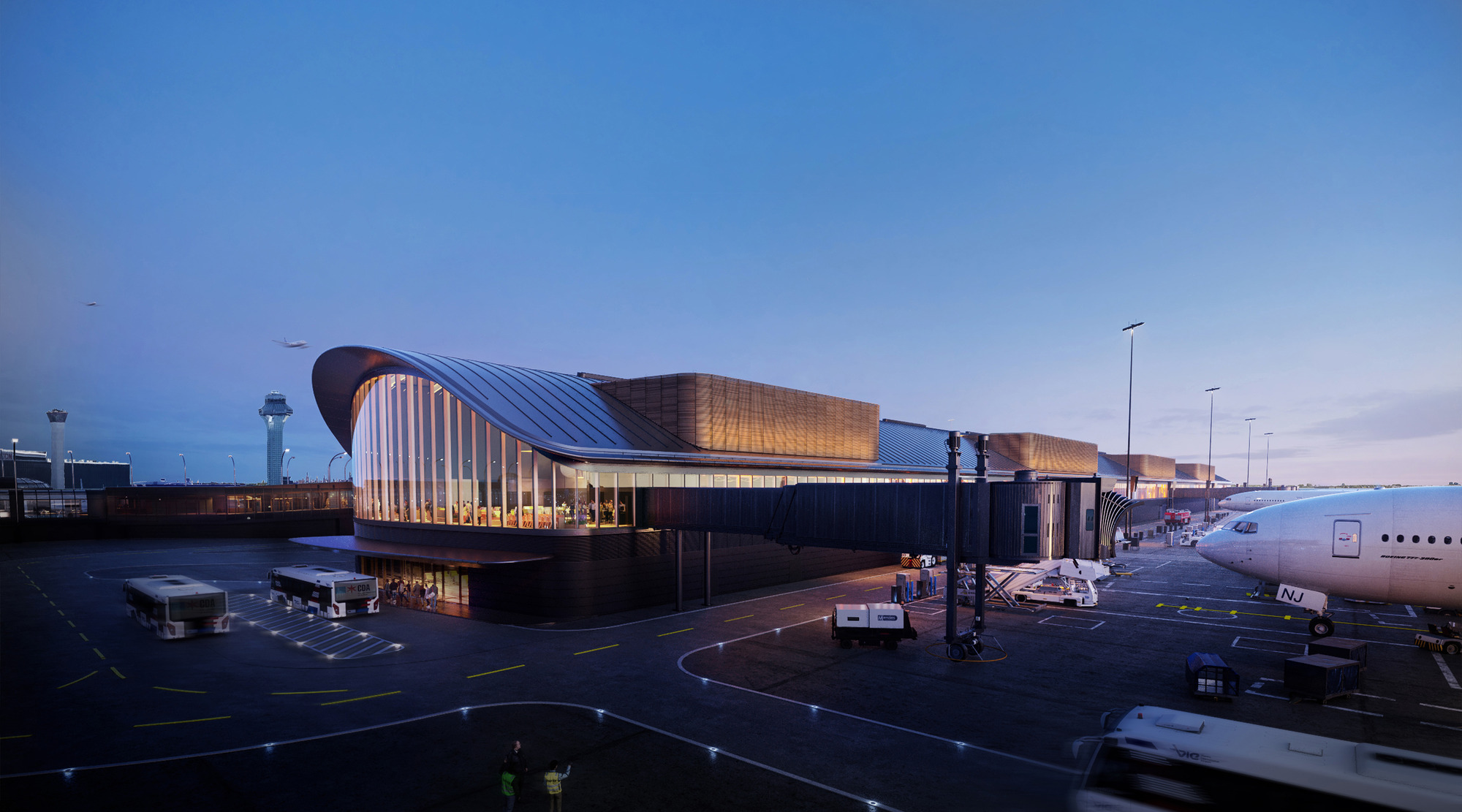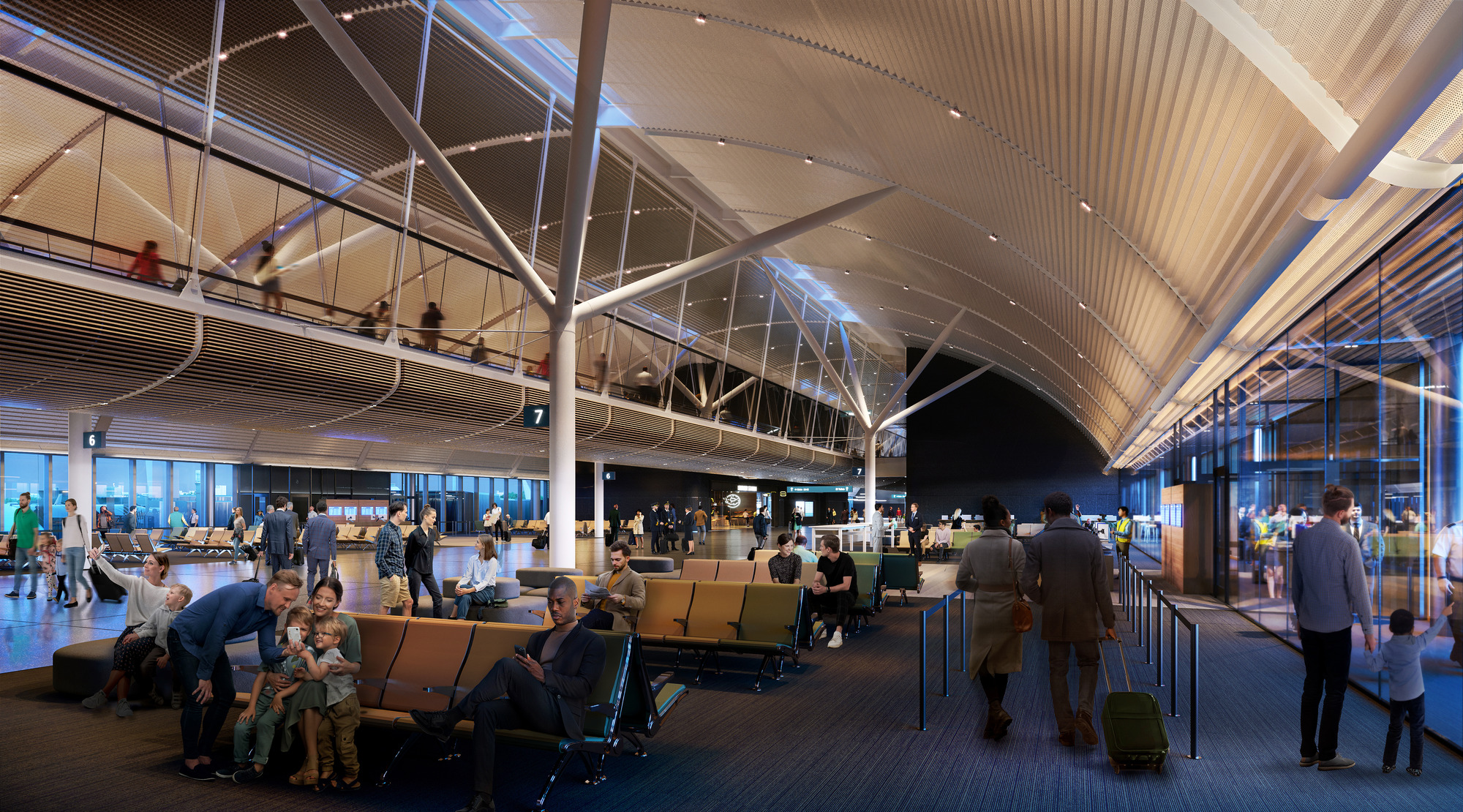
All renderings courtesy of Skidmore, Owings & Merrill (SOM)
From major cities to small towns, airports offer hubs for transportation, connecting travelers in a complex network of takeoffs and touchdowns. Air travel has come a very long way since its start in the early 1900s, and now the airports themselves are beginning to reflect the global population’s desire for more comfortable and engaging experiences. As travelers journey from point A to point B, lighting design has become increasingly important to those with downtime and layovers. The aviation industry shares a vision of the future in which airports are not only transit stops, but destinations themselves. Welcoming, functional, and dynamic lighting design plays a large role in that vision – and can be achieved through an understanding of the changing goals of the air travel industry.
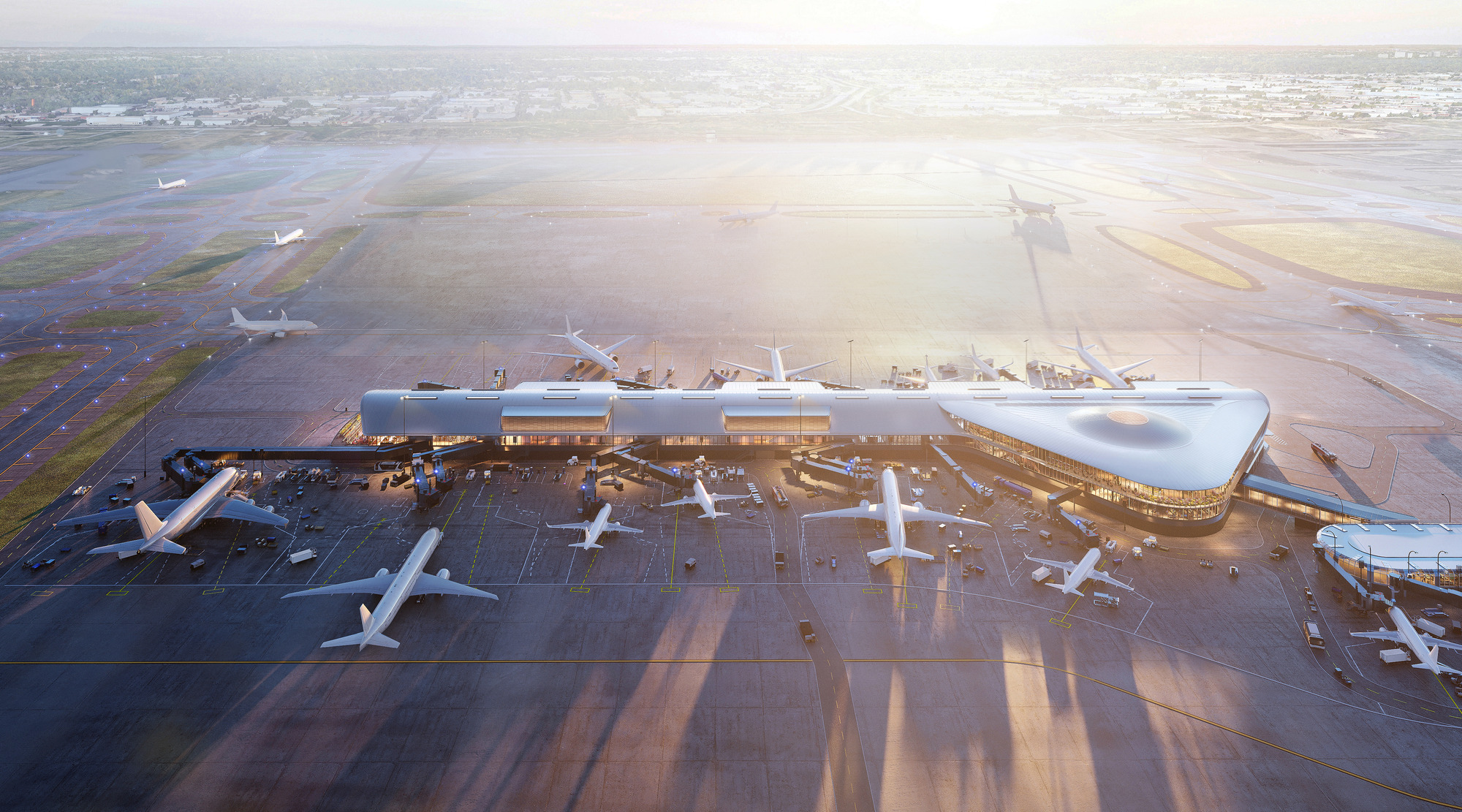 O'Hare International Airport Satellite Concourses
O'Hare International Airport Satellite Concourses
The Art of the Airport
Far from the green-white fluorescent glow of the past, airports today are designed with consistent comfort and unique experiences in mind. Take, for example, the magic of Singapore’s Changi Airport, with its butterfly sanctuary and double-height atrium waterfall. This spectacle-oriented design creates a place where travelers actually want to spend their time.
Though not every airport can feature an entire waterfall, many across the globe are embracing a similar hospitality-minded approach. And when it comes to designing lighting for these modern aviation hubs, our team’s experience in hospitality design means we’re well equipped to welcome and wow travelers, encouraging exploration and engagement with everything the airport has to offer.
Though not every airport can feature an entire waterfall, many across the globe are embracing a similar hospitality-minded approach. And when it comes to designing lighting for these modern aviation hubs, our team’s experience in hospitality design means we’re well equipped to welcome and wow travelers, encouraging exploration and engagement with everything the airport has to offer.
Our team’s experience in hospitality design means we’re well equipped to welcome and wow travelers…
We have found it especially important to focus on distinguishing one space from another inside the open floor plan of an airport. By making every area attractive and distinct – from thoroughfares to waiting areas to lounges – we ensure an exciting experience free from the monotonous drone travel often takes on. Giving passengers places to journey (besides their gate) elevates their experience considerably. In this way, airports can transcend the “waiting game” and instead act as a mall, a cafe, a workspace, and even a legitimately satisfying dining destination.
Iconic transportation locales such as Grand Central and Penn Stations are a reminder of the grandeur that used to be prioritized when constructing transit hubs. Our goal is to tap back into that legacy – to respond to the soaring architecture of airports with lighting design that’s friendlier and more theatrical than the flat fluorescent sheen we’ve come to associate with air travel.
Iconic transportation locales such as Grand Central and Penn Stations are a reminder of the grandeur that used to be prioritized when constructing transit hubs. Our goal is to tap back into that legacy – to respond to the soaring architecture of airports with lighting design that’s friendlier and more theatrical than the flat fluorescent sheen we’ve come to associate with air travel.
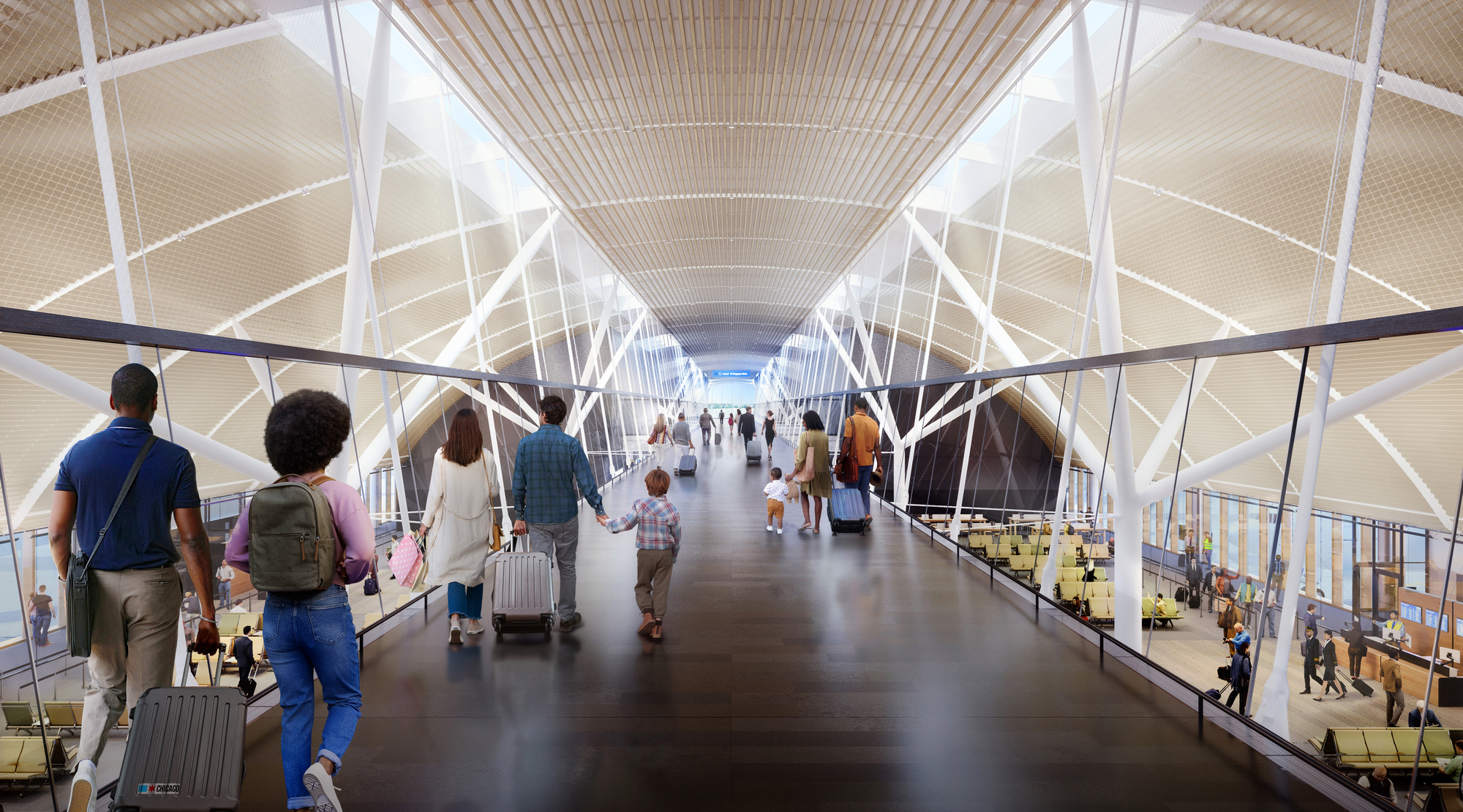
Placemaking for Passengers
Every space has a personality, and airports are no different. Many have already adopted a specific theme, like Charlotte, North Carolina’s charming “front porch” aesthetic (complete with ample rocking chairs). In Chicago’s ever-evolving O’Hare International Airport, the design harkens back to the history of the land, emulating an orchard – which even influenced the code of the airport itself: ORD.
During our work on O’Hare’s new satellite concourses, the design teams have focused on bringing elements of the natural world into the space, such as the ubiquitous wood and earth tones in the decor. Our lighting design introduces warmth to this organic materiality, reinforcing the Midwest prairie theme that invites travelers to lounge beneath trees and gaze up at the soaring wood ceiling.
During our work on O’Hare’s new satellite concourses, the design teams have focused on bringing elements of the natural world into the space, such as the ubiquitous wood and earth tones in the decor. Our lighting design introduces warmth to this organic materiality, reinforcing the Midwest prairie theme that invites travelers to lounge beneath trees and gaze up at the soaring wood ceiling.
Knowing how to light such a cavernous location is an acquired and indispensable skill…
This large volume of space is what sets airport design apart from other projects, and knowing how to light such a cavernous location is an acquired and indispensable skill. For example, while previous projects have required our team to install fixtures that throw light 15 feet, our airport designs often increase that number to 50 feet or more. Everything, from the fixtures to the quality of the light itself, must be presented on a grander scale.
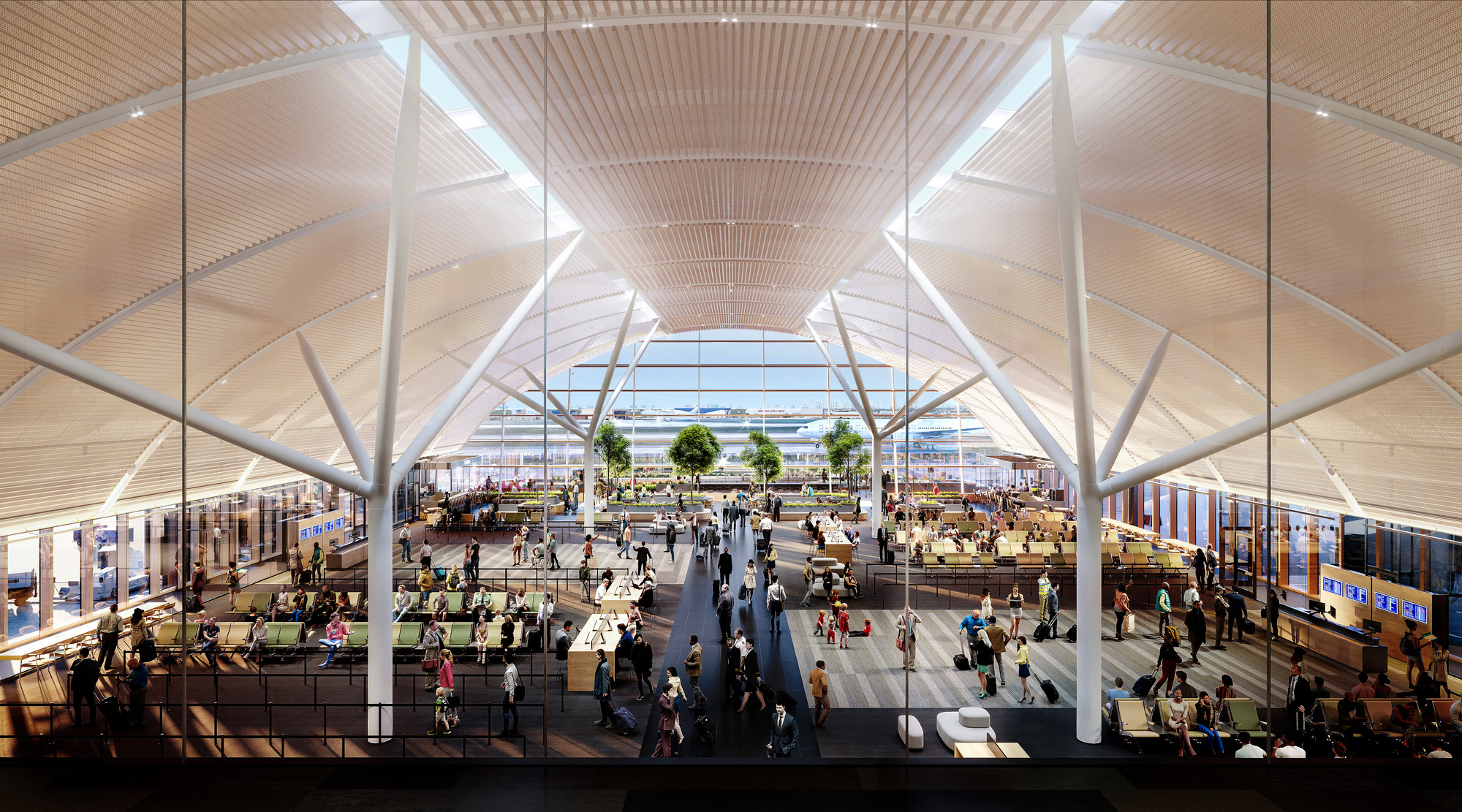
However, we make sure to balance the grandiosity of our designs with human-level illumination. Details like integrated work desk lighting and small glowing accents at the foot of seats offer tangible comforts on which travelers can anchor themselves, no matter how long they’re waiting for their next flight. This philosophy extends to all parts of the airport – even the restrooms. In these private spaces, warm, indirect luminance melts away travelers’ fatigue when they look in the mirror.
This is Your Captain Speaking
Because airports are exceptionally large spaces, they call for an exceptionally large team. Our work at O’Hare has required large scale coordination – from meeting with consultants, to leading populous team calls, to cooperating with all other teams on the project to devise lighting that suitably responds to the surrounding architecture. This massive project calls for a holistic perspective that keeps every facet of the design in mind.
We’re ready to help create the airports of tomorrow…
With a wide-ranging portfolio of work in the hospitality and corporate sectors, Gwen Grossman Lighting Design is uniquely equipped to design for the airports of the future. Our work at O’Hare is wide-ranging, from the artistic wayfinding of United Airlines’ Gate of the Future to the magnificent scope of the new satellite concourses. We understand where practical and theatrical lighting intersect, and our thorough comprehension of placemaking allows us to design on a grand scale while maintaining small details that make a space welcoming and functional. We’re ready to help create the airports of tomorrow with designs full of excitement and magic – cementing these spaces not only as stops on the journey, but as destinations all their own.
